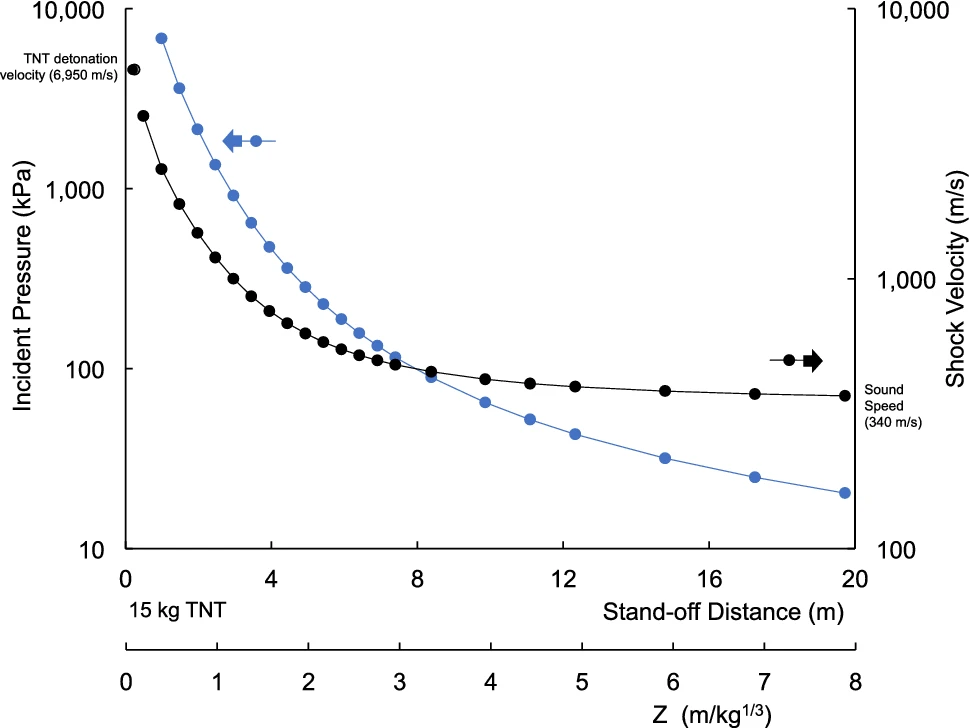Squizzie said:
Could I ask you to elaborate on "self-sharpening pressure step" please, and how it applies to blast waves?
That is fundamental to the discussion here.
The speed of sound is proportional to the square root of temperature. So the speed of sound is faster in hotter air than colder air. The speed of sound is an immediate function of temperature, not of pressure.
The pressure wave generated by an explosion causes heating of the air.
The back of the shock-front is hotter than the front of the shock-front, so the back of the wave catches up with the front of the wave. That keeps the wave steep. I call that self-sharpening.
That pressure and temperature wavefront step will continue, until the compressive energy is no longer able to significantly heat the air. The speed will then be restricted to Mach 1, it will become a normal sound wave.
Look at table XI in Kinney and Graham. It shows that the velocity,
Mx, of the shock-front, resulting from the detonation of 1 kg of TNT, is supersonic throughout the 500 metre passage of the blast wave.
Any supersonic blast wave must have a sufficient pressure step to cause a temperature rise, or it would not be supersonic.
Your persistent demands that, the shock-front of a blast wave must travel at the speed of sound, demonstrates a rejection of the fundamental step assumption that defines, and makes a shock-front special.
You are caught in a self-contradiction, a paradox of your own making. Once you understand the self-sharpening effect of the pressure step, you will understand what makes supersonic shock-fronts so interesting, and so destructive.


